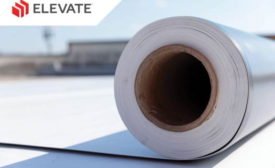- admin
- 15, Nov 2024
Nichiha Achieves EPDs for Both U.S. Factories, Embracing Sustainability Transparency
Nichiha USA recently secured environmental product declarations (EPDs) for both of its American manufacturing facilities. The global brand worked closely with Intertek Assuris on an EPD approved by the International EPD® System, regarded as the highest standard for third-party vetted sustainability pursuits.
Standardized documents that enable participating manufacturers to report on sustainability based on a set of specific requirements, the EPDs acquired by Nichiha encompass two of the brand’s product lines: architectural wall panels (AWP) manufactured at its Plant #2 facility, and NichiProducts, which are produced at its Plant #1 facility, both located in Macon, GA. To achieve the designation, Nichiha was required to submit substantial manufacturing data for a Life Cycle Assessment (LCA).
“Sustainability is an enterprise-wide priority at Nichiha, and this independent verification of our willingness to be transparent on our manufacturing processes demonstrates our commitment,” said Vance Thomas, director of warranty technical services at Nichiha. “These two EPDs provide architects, designers, and other project stakeholders with a clear look at Nichiha’s environmental impact and how it factors into their respective projects, all tabulated by a third-party analyst. It’s proof positive that our brand is an ally for climate-conscious projects.”
To secure an EPD, Nichiha was required to provide full product life cycle data, including raw material supply and transportation, manufacturing, and subsequent transportation of the finished product to a job site. The report also includes end-of-life stages in deconstruction and demolition, transport, waste processing, and disposal. In addition, it accounts for a final resource recovery stage, analyzing the product’s reuse-recovery-recycling potential. For each of these stages in the product life cycle, the report accounts for a variety of standardized environmental indicators, including global warming potential (GWP) metrics, ozone depletion potential (ODP), acidification potential (AP), and more. Architects, specifiers, and other key construction professionals seeking sustainability credentials for products they specify know they are making an analogous comparison amongst manufacturers who acquire an EPD, because each manufacturer was placed under the same set of criteria and analysis.
“Nichiha is holding itself to a high standard here,” added Thomas. “These two EPDs are just another step in Nichiha’s global sustainability transparency aims, which are already underway.”
For more information, visit: https://www.nichiha.com/.


